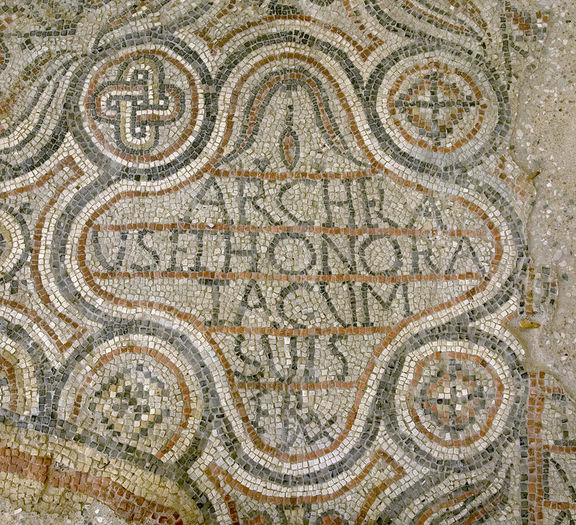Roman Emona
History
The Romans built their first military encampment on the territory of the present Ljubljana in around the year 50 BCE. This was later followed by the establishment of a permanent settlement called Iulia Aemona (Emona). As a strategic stronghold playing an important role in numerous wars, Emona was fortified with strong walls.
It had a population of 5,000 to 6,000 people, mostly merchants and craftsmen, including a number of government officials and war veterans. Its streets were paved and its houses were brick built, centrally heated and connected to a public sewage system. Their walls were plastered and painted in different colours, and their floors covered in mosaics.
Emona was, among other things, an important early Christian centre with a flourishing trade. It had its own goddess, Equrna, worshipped at the Ljubljana Marshes.
From the 4th century CE Emona fell into a decline along with the Western Roman Empire. It was several times handicapped in 238, 314 and 401. It was finally destroyed by Attila in 452.
Castrum
Emona ground plan, typical for Roman castra, was 430 meters times 540 meters and was surrounded by city walls, which were 6–8 meters high and 2,5 meters thick. 4 main entrances were located by the exits of Cardo maximus (today’s Slovenska) and Decumanus maximus streets (today’s Rimska), along which the forum was located. The city was defended with 26 towers, which were built every 60 meters along the walls.
Remains
The relics of Roman Emona may be found in three main areas of Ljubljana as well as in the urban planning of the town. Former decumanus and cardo are today’s Rimska and Slovenska street, where the Roman northern main entrance, part of late Roman house and a sarcophagus can be seen opposite the Uršulinke church. The Roman forum is stressed with the building design of Ferant garden by the architect Edvard Ravnikar. A copy of Roman statue Emonec stands at the west side of Kongresni trg. Attentive walker can find Roman spolia built in different buildings, from the Cathedral to the Ljubljana Castle. The finds of Roman insula underground are presented in different pavement like at Vegova street.
The archaeological site at Jakopič garden, managed by the City Museum of Ljubljana, contains the foundations of an Emona house (part of an insula) with mosaics and the remains of floor heating, part of a street and a section of the town sewage system. A section of the old Roman city walls, renovated by architect Jože Plečnik, may be seen in Mirje district. And the remains of a baptistery with a pool, mosaics, and part of portico may be seen at Erjavčeva 18, next to Cankarjev dom Culture and Congress Centre and Majda Vrhovnik Primary School.
See also
- Roman Brickworks Kiln, Ptuj
- Orpheus Memorial, Ptuj
- Šempeter v Savinjski Dolini Roman Necropolis
- Rimljanka Bookstore
- Hrušica - Museum Collection and Archaeological Park



